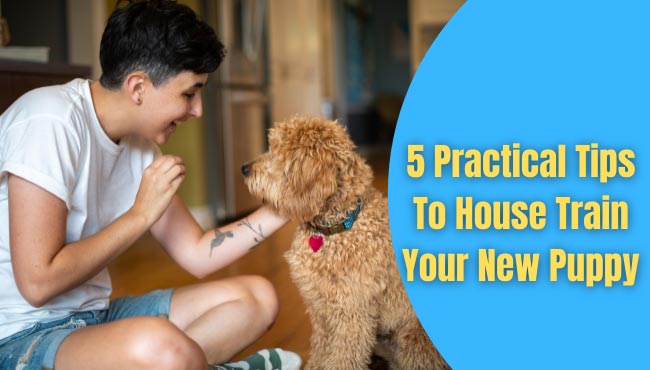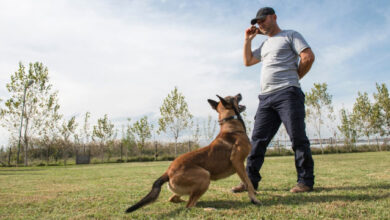
While it’s undeniably heart-warming to welcome home a new puppy, you’ll need to consider all the relevant responsibilities of owning a pet to keep your puppy happy and healthy. Firstly, your pup will need to visit the vet for a health exam and essential vaccinations. In addition, it’s worthwhile to consider purchasing pet insurance.

Read More:
- 10 Effective Ways to Treat Dog Depression
- 10 Best Dog Breeds for Kids
- what causes ticks in dogs? How to Prevent Ticks in Dogs?
- What Types Of Anti-Barking Products Are Available For Your Dog?
- Signs that Your Cat is Talking to Its Feline Friends
You’ll also need a few essentials like a pet bed, the right pet food, some chew toys, and, of course, some nutritious treats.
But once you’ve welcomed your new puppy home, you’ll also need to have a plan in place for house training. You won’t want your puppy messing on the floors, destroying rugs, or pining for you when you’re not at home, so training is crucial.
These practical puppy house training tips can benefit your journey as a loving pet parent.
1. Use Puppy Pads
Puppy pads can be a lifesaver for pet parents that live in apartment buildings without an outdoor area. Although, these are also beneficial for anyone that’s training a puppy because they help create a routine.
Place puppy pads in the same place so that your puppy can associate the area and the pad as their very own bathroom area.
2. Invest In Antifoul Spray
Many pet parents experience their pet fouling in the same spot inside the house; this could be an area rug or anywhere else. As the pet develops a habit, breaking it can be challenging. Antifoul spray is the ideal solution. Thoroughly clean the spot and spray routinely with the product to repel your pet from the area.
Alternatively, you can blend your own homemade dog repellent spray using ingredients like vinegar or cayenne pepper.
3. Develop A Routine
The best way to train your puppy not to mess inside is to develop a routine. Take your pet outside or to their puppy pad at regular intervals throughout the day, starting first thing in the morning. With this, your pet will develop association through a routine.
4. Reward Good Behavior
It’s not the best idea to punish your puppy for an accident; this can strike fear in your pet, causing destructive behaviors. Instead, discipline your pet for fouling accidents with the crate technique.
On the other hand, you’ll also need to encourage your pet for good behaviors by rewarding them with a treat, a few head scratches, and kind words when they foul in the right place. Even if it feels a bit silly, it’s important to make a big deal about this type of good behavior as your pet will also develop association and link a tasty treat and love to particular good actions.
5. Set A Standard For Discipline
It’s important to discipline your puppy the right way. It’s best to have the goal of using positive discipline methods, like positive reinforcement, and positive punishment methods like collar correction for leash pulling.
If you are struggling to discipline your puppy, it’s wise to opt for pet training sessions with a professional dog trainer.
Conclusion
As you can see, training a dog is not a one-size-fits-all proposition. There are many factors to consider, such as age, learning history, and your methods and consistency. For example, an 8-week-old puppy is very different developmentally than a 5-month-old puppy. Some puppies have perfect manners after just a few days. Others can take months, especially if the dog has had a less than ideal situation before coming to you. With patience and persistence, though, most dogs can learn what is expected of them with enough repetition and positive reinforcement. So don’t get discouraged – keep up the good work and be patient with your furry friend!




